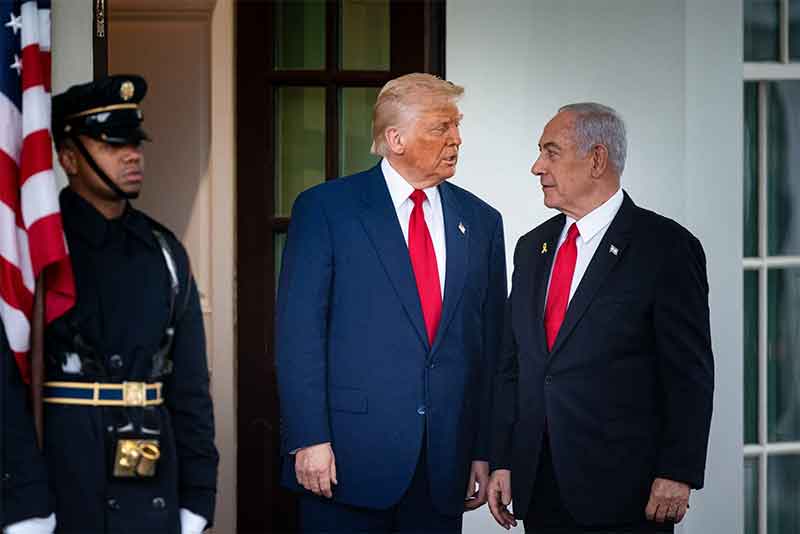
If Bharatiya Janata Party (BJP) had not the lost the parliamentary seat of Faizabad in Uttar Pradesh (UP), where the Ram Mandir is situated, would the Indian elites, intellectuals, critics and others have been talking about Indian secularism being still very much alive? Look at the situation from another angle. After all, the population of Faizabad, less than a million, is not even a percentage of the total Indian population. So if the BJP had won this seat, but had performed as poorly as it has in other states, particularly UP, would speculations have been entertained regarding people being secular or not? Of course, Faizabad’s identity rests on the grand temple situated there, where once stood Babri Mosque which was demolished on December 6, 1992. The demolition led to riots across the country targeting Muslims. Yes, that was a phase, when Indian secularism faced a strong test. But if it had been totally demolished and crushed, India would not have still remained home to second largest population of Muslims in the world. That was not the first or last time that India witnessed communal riots. However, what cannot be ignored is that down the centuries, secularism of Indians at large has remained steadfast.
Now, it would be erroneous to assume that communal language with strong “religious” overtones of even the most powerful politicians would be easily believed and accepted as actually “religious” by even illiterate people at the grass-roots. And why should they? Why? When most politicians give excessive importance to their religious exercises, their purpose is primarily viewed as political and/or electoral – if elections are around the corner.
With respect to Faizabad, there is no denying that excessive importance was given to Ram temple there by BJP stalwarts earlier this year hoping to sweep the national elections. But these leaders failed in not just the country, the key state-UP, but also in Faizabad. Their failure, as mentioned earlier, has compelled quite a few persons to acknowledge the strength of Indian secularism. Let us look at this from another angle. Though the party has won majority in 2014 as well as in 2019 parliamentary election, both the times, BJP received less than 40 percent of seats. From this angle, it would certainly be erroneous to judge Indians’ secularism in keeping with number of seats won by the party viewed as “communal.” Elementarily speaking, given that India has a multi-party system, electoral results tend to be primarily decided by how well the opposition parties are united in seat-sharing and during their campaign against the key party. The voters’ secularism is certainly not judged by this.
Specifically in the case of Faizabad’s result, it was assumed ahead of polls that BJP, or more specifically- Prime Minister Narendra Modi’s display of his religious cards at Ram temple this January, telecast nationally, would play a major role in helping the party return to power. In other words, Modi and his party colleagues, apparently played this card with the assumption that nothing else mattered for Indian voters in general against the religious cards used by them. Well, nothing needs to be said about what results have indicated. What is stunning, is that the so-called “religious”- card, also described as “communal,” appears to have been viewed as the scale to judge secularism of Indians as a whole.
Briefly, even if one reflects on Babri Masjid’s demolition, Gujarat-carnage and other communal incidents, neither can be viewed as keeping even fifty percent of the country’s population engaged against each other or in violence targeting primarily minorities. Yes, general trend of their being projected as such through various outlets of media, globally as well as nationally, has prevailed. Now, would it be fair to assume that BJP genuinely represents the entire Hindu community of the country? Definitely not. Some consideration should be given to its rival parties also including majority of Hindus. Equally important is numerical as well as socio-political stand of critics asserting their own secularism and lashing out at communal cards used by extremist, right-winged groups. They include people from all religions, but the larger section is of Hindus. And these have not kept quiet when communalism has disturbed the country, whether in 1992, 2002 or at other times. They have certainly through these moves kept secularism alive.
Secularism has been and will be kept alive most strongly in all probability by those who dread being severely affected by negative impact of communalism. Here, the reference is not to minorities targeted by right-winged, extremist agents. But it refers to all sections of society who feel severely affected by communal violence, particularly economically. When a curfew is imposed, business of all shopkeepers and others witnesses a fall. Even when people of only a particularly community are targeted to the point of being killed, it spells loss of them as customers and also of those who choose to leave the area because of communal strikes. It may not be wrong to say that negative impact of communalism, particularly socio-economically has contributed to a major decline in communal riots spread over large areas. Yes, this does not mean that communal perceptions and negative approaches between people of different communities have changed towards extremely positive interaction and so forth. Nevertheless, the prevalent nature of cooperation between them has certainly kept communalism in check. Cooperation includes employing services of those viewed to be efficient and available, irrespective of the religious community they belong to.
Against this backdrop, perhaps one also needs to understand that there is a difference in voicing communal views and casting votes in context of perceiving economic gains, threats and/or losses, benefits they have experienced from power holders. Votes cast in Faizabad against BJP, irrespective of the elaborate “religious” moves indulged in by power-holders may be viewed as a reflection of this approach. At the same time, if Congress and Samajwadi Party, together with their India-bloc had not campaigned aggressively against BJP, the result may have been different. In a way, their campaign voiced the socio-economic grievances/losses people of Faizabad have suffered primarily because of BJP going over-board in display of its “religious”- card. Apparently, their prevailed the fear, that supporting, that is voting for them, would spell more trouble for people of this nature that is socio-economic grievances for all, irrespective of their religious differences.
Subscribe to Our Newsletter
Get the latest CounterCurrents updates delivered straight to your inbox.
One may say, 1992 marked a defining point of what nation-wide communal disturbances can spell for Indians across the country. In 2002, it isn’t surprising that Gujarat-carnage was confined to the state despite the fact that communal phase was telecast all over the country. Rather, it may not be wrong to say that the carnage played a role in pushing the then BJP-led government out of power in the next elections. Indians weren’t pleased with what they saw taking place in Gujarat. Modi was given a chance after two terms of Congress-led government, from 2004 to 2014. To a considerable degree, Indians themselves have been wary of being provoked to any stage of communal violence. The case is different if a few elements go overboard in deliberately creating disturbances between various communities in select parts. Or at times they have no choice when havoc is created because of some top orders’ decision. One may recall the order issued for Covid lockdown in March 2020. People haven’t yet recovered fully from its impact. But yes, it certainly may be viewed as another defining point when Indians became strongly aware of what socio-economic disturbances cutting across all communities can spell for them. Attempt was also made to add a communal color to Covid-phase. Covid-lockdown imposed in India has been described as the most extensive and harshest in the world. Confrontation with socio-economic problems also made people acutely conscious of what national impact of similar nature, particularly communalism can lead to. And this compelled majority to once again draw a line- between what they preferred:– communalism in the name of “religion” or secularism. This is not simply the case of culturally, majority having always been secular but also in this phase when certain elements seem to be going overboard to propagate communalism, the majority prefers refraining from it because of its negative socio-economic impact. The latter point has apparently made them more conscious about its negative impact. Faizabad’s case has certainly hit headlines and made more people finally acknowledge that Indian secularism cannot be easily defeated. But Faizabad is just a minor example. Communal frenzy in the name of religion now seems to have lost the power of blinding people – politically, socially and economically – against the importance of Indian secularism and of course their votes!
Nilofar Suhrawardy is a senior journalist and writer with specialization in communication studies and nuclear diplomacy. She has come out with several books. These include:– Modi’s Victory, A Lesson for the Congress…? (2019); Arab Spring, Not Just a Mirage! (2019), Image and Substance, Modi’s First Year in Office (2015) and Ayodhya Without the Communal Stamp, In the Name of Indian Secularism (2006).












































